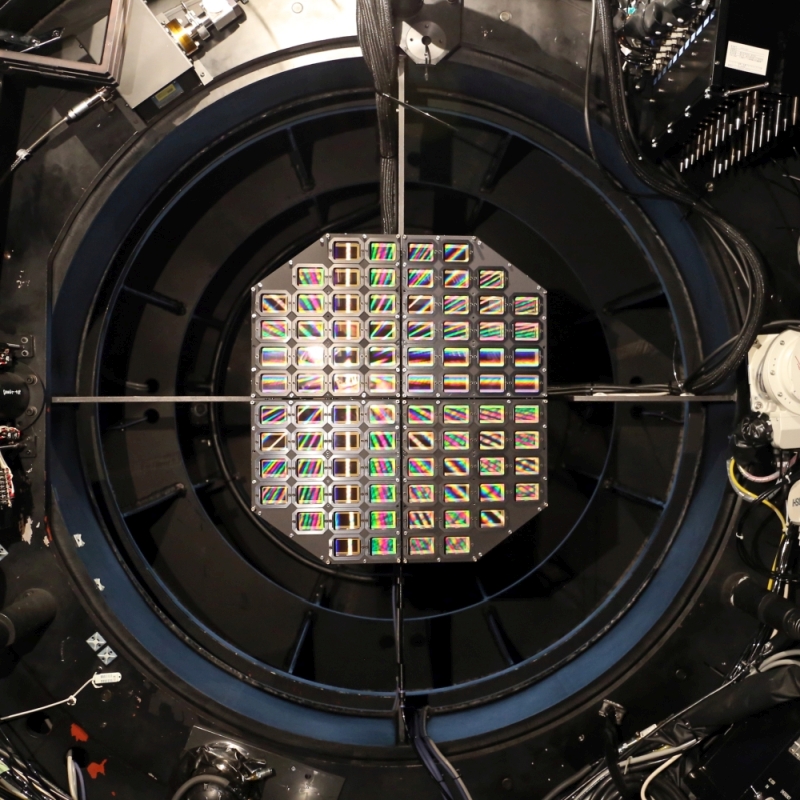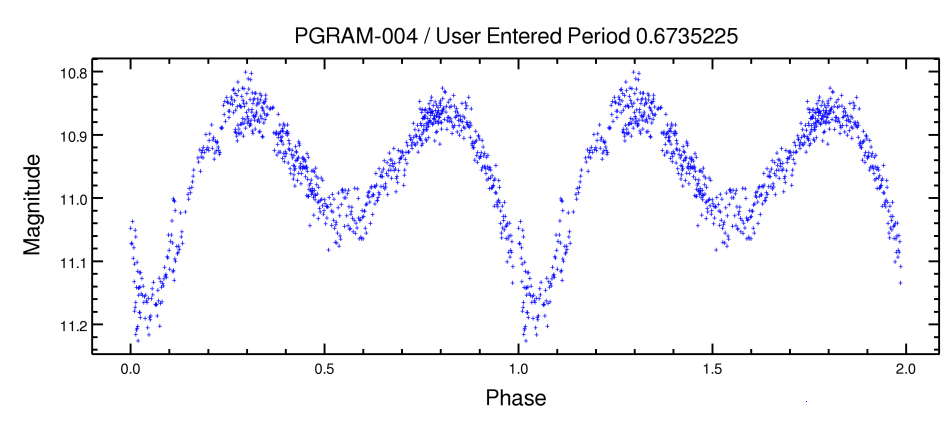
Image caption: The Tomo-e Gozen camera consists of 84 CMOS chips and sits at the focal plane of the 1.05-meter Kiso Schmidt Telescope
During the calendar year 2021 (for the second year in a row), Michael Richmond was unable to travel to Japan to continue in person his collaboration with the Tomo-e Gozen team at the University of Tokyo. However, he did provide advice to one of their graduate students, Noriaka Arima, on his Ph.D. project. Arima-san is sifting through very large volumes of data -- optical images covering many square degrees on the sky, taken with a cadence of one per second! -- to look for transient objects with very short lifetimes. In many ways, this continues the project first described in Richmond et al. (2020); but since the Tomo-e Gozen camera's focal plane is now fully populated with 84 CMOS sensors, rather than the eight sensors used in that earlier paper, the computational task is now much more difficult. Arima-san is also designing his own algorithms to identify transient objects and separate real sources from artifacts and noise. The results will be very interesting!
Richmond, M. W., et al., PASJ 72, 3 (2020)

Image caption: The Tomo-e Gozen camera consists of 84 CMOS chips
and sits at the focal plane of the 1.05-meter Kiso Schmidt Telescope
The RIT Observatory was closed to the public due to the Covid-19 pandemic; for safety's sake, the usual introductory astronomy labs were also canceled during this period. However, that didn't mean that our telescopes were left to idle in the dark. Richmond made use of the instruments to carry out several projects:

Image caption: Michael Dussault's measurements of V445 Cas in V-band
Richmond also acted as the graduate advisor for a student earning his MS in the AST program. Will Wainwright has been devising methods to extract information from the Gaia satellite's database to measure the properties of open clusters within the Milky Way. Wainwright has written a suite of software to identify the members of clusters, and to use their properties to determine the distance to the cluster. By computing absolute magnitudes for cluster members, and comparing them to theoretical models of stars computed by the MIST group at Harvard, Wainwright can estimate the reddening to each cluster, its metallicity, and its age. If all goes well, he should finish his MS thesis next year.
Richmond is a member of the RIT AGN-Galactic Environments (RAGE) group, led by Andy Robinson. He provides advice to RAGE undergraduate and graduate students on a regular basis.
Kostov, V. B., et al., AJ 162, 234 (2021) "TIC 172900988: A Transiting Circumbinary Planet Detected in One Sector of TESS Data"
Niijima, K., et al., arXiv 2107.03681 (2021) "Optical Variability Correlated with X-ray Spectral Transition in the Black-Hole Transient ASASSN-18ey = MAXI J1820+070."